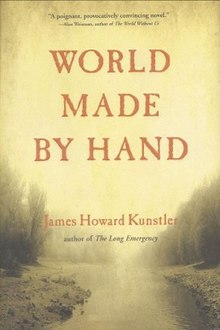
Hebron is a Palestinian city in the southern West Bank, 30 kilometres (19 mi) south of Jerusalem. Nestled in the Judaean Mountains, it lies 930 metres (3,050 ft) above sea level. The second-largest city in the West Bank, and the third-largest in the Palestinian territories, it had a population of 201,063 Palestinians in 2017, and seven hundred Jewish settlers concentrated on the outskirts of its Old City. It includes the Cave of the Patriarchs, which Jewish, Christian, and Islamic traditions all designate as the burial site of three key patriarchal/matriarchal couples. The city is often considered one of the four holy cities in Judaism as well as in Islam.
Utopian and dystopian fiction are subgenres of science fiction that explore social and political structures. Utopian fiction portrays a setting that agrees with the author's ethos, having various attributes of another reality intended to appeal to readers. Dystopian fiction offers the opposite: the portrayal of a setting that completely disagrees with the author's ethos. Some novels combine both genres, often as a metaphor for the different directions humanity can take depending on its choices, ending up with one of two possible futures. Both utopias and dystopias are commonly found in science fiction and other types of speculative fiction.
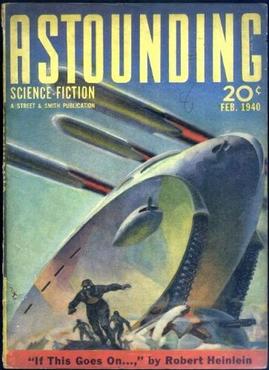
"If This Goes On—" is a science fiction novella by American writer Robert A. Heinlein, first serialized in 1940 in Astounding Science-Fiction and revised and expanded to novel length for inclusion in the 1953 collection Revolt in 2100. The story shows what might happen to Christianity in the United States with mass communications, applied psychology, and a hysterical populace. The story is part of Heinlein's Future History series.
"Harrison Bergeron" is a satirical dystopian science-fiction short story by American writer Kurt Vonnegut, first published in October 1961. Originally published in The Magazine of Fantasy and Science Fiction, the story was republished in the author's Welcome to the Monkey House collection in 1968.
In the Latter Day Saint movement, priesthood is the power and authority of God given to man, including the authority to perform ordinances and to act as a leader in the church. A group of priesthood holders is referred to as a quorum.

Grove City College (GCC) is a private, conservative Christian liberal arts college in Grove City, Pennsylvania. Founded in 1876 as a normal school, the college emphasizes a humanities core curriculum and offers 60 majors and six pre-professional programs with undergraduate degrees in the liberal arts, sciences, business, education, engineering, and music. The college has always been formally non-denominational, but in its first few decades its students and faculty were dominated by members of the Presbyterian Church, to the extent that it was sometimes described as having a de facto Presbyterian affiliation; in more recent decades, it and the Presbyterian Church have moved apart.
The Childe Cycle is an unfinished series of science fiction novels by Canadian writer Gordon R. Dickson. The name Childe Cycle is an allusion to "Childe Roland to the Dark Tower Came", a poem by Robert Browning, which provided inspiration for elements in the work. The series is sometimes referred to as the Dorsai series, after the Dorsai people who are central to it. The related short stories and novellas all center on the Dorsai, primarily members of the Graeme and Morgan families.

George Howard Earle III was an American politician and diplomat from Pennsylvania. He was a member of the prominent Earle and Van Leer families and the 30th governor of Pennsylvania from 1935 to 1939. Earle was one of just two Democrats who served as governor of Pennsylvania between the Civil War and World War II.
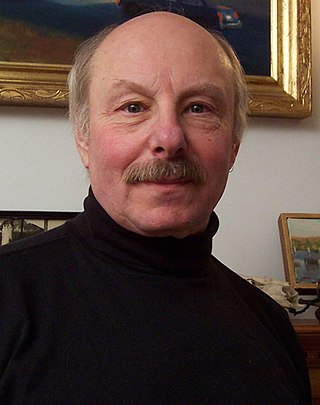
James Howard Kunstler is an American author, social critic, public speaker, and blogger. He is best known for his books The Geography of Nowhere (1994), a history of American suburbia and urban development, The Long Emergency (2005), and Too Much Magic (2012). In The Long Emergency he imagines peak oil and oil depletion resulting in the end of industrialized society, forcing Americans to live in smaller-scale, localized, agrarian communities. In World Made by Hand he branches into a speculative fiction depiction of this future world.

Geoffrey William "Geoff" Bullock is an Australian singer-songwriter and pianist. He helped pioneer the Hills Christian Life Centre, which later became Hillsong Church. He was appointed as the church's worship pastor and was also the convenor of their annual conferences from 1987 to 1995, before leaving Hillsong in late 1995.
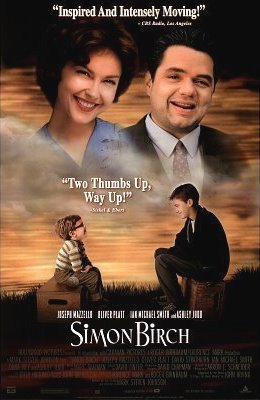
Simon Birch is a 1998 American comedy-drama film loosely based on the 1989 novel A Prayer for Owen Meany by John Irving and written for the screen and directed by Mark Steven Johnson in his directorial debut. The film stars Ian Michael Smith, Joseph Mazzello, Jim Carrey, Ashley Judd, and Oliver Platt. It omitted much of the latter half of the novel and altered the ending.
The Indian Pentecostal Church of God (IPC) is one of the largest Pentecostal Christian Denomination in India, with over 10,000 congregations worldwide. Its organisational headquarters located in Kumbanad, Kerala, India. IPC has similarities with the Kerala Brethren denomination in terms of its beliefs on orthodoxy and eschatology, as a large portion of IPC's founders and early members were from the Kerala Brethren. IPC tends to shy away from ecumenism, and some of its leaders reject high church liturgy as a method of worship, instead opting for low church congregational worship.

Frank James Jobe was an American orthopedic surgeon and co-founder of the Kerlan-Jobe Orthopaedic Clinic. Jobe pioneered both elbow ligament replacement and major reconstructive shoulder surgery for baseball players.

Endymion is the third science fiction novel by American writer Dan Simmons, first published in 1996. Part of his Hyperion Cantos fictional universe, it centers on the new characters Aenea and Raul Endymion, and was well received, like its predecessors Hyperion and The Fall of Hyperion. Within a year of its release, the paperback edition had gone through five reprints. The novel was shortlisted for the 1997 Locus Award.
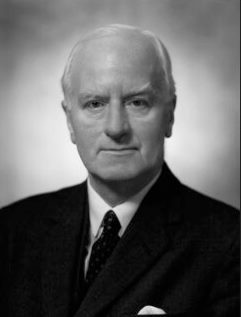
Sir Ernest Bullock (1890–1979) was an English organist, composer, and teacher. He was organist of Exeter Cathedral from 1917 to 1928 and of Westminster Abbey from 1928 to 1941. In the latter post he was jointly responsible for the music at the coronation of George VI in 1937.
Sheila Walsh is a Scottish-born American contemporary Christian vocalist, songwriter, evangelist, author, inspirational speaker, and talk-show host.

A dystopia, also called a cacotopia or anti-utopia, is a speculated community or society that is undesirable or frightening. It is often treated as an antonym of utopia, a term that was coined by Sir Thomas More and figures as the title of his best known work, published in 1516, which created a blueprint for an ideal society with minimal crime, violence, and poverty. The relationship between utopia and dystopia is in actuality, not one simple opposition, as many utopian elements and components are found in dystopias as well, and vice versa.
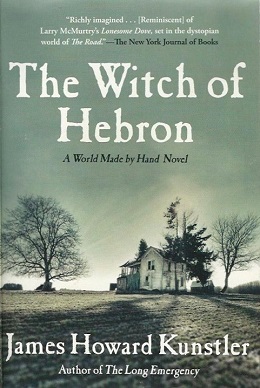
The Witch of Hebron is a dystopian novel by American writer James Howard Kunstler, published in 2010. It is a sequel to his 2008 novel World Made by Hand. Set in the fictional town of Union Grove, New York, the novel follows many of the same cast of characters from the previous novel as they navigate a world stripped of its modern comforts, ravaged by terrorism, epidemics, and the economic upheaval of peak oil.

A History of the Future is the third installment in American author and social critic James Howard Kunstler's A World Made by Hand series. As Christmas Day approaches, a double murder challenges an improvised justice system, and a young man returns after a two-year journey with his own story to tell.
